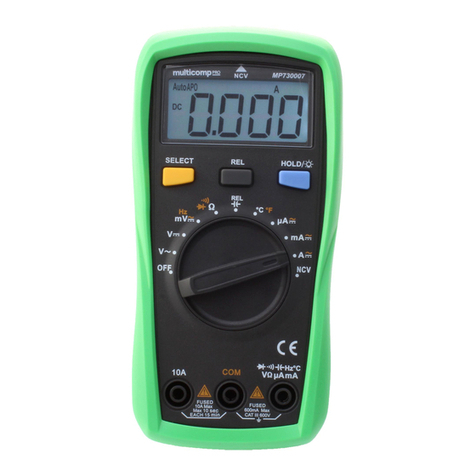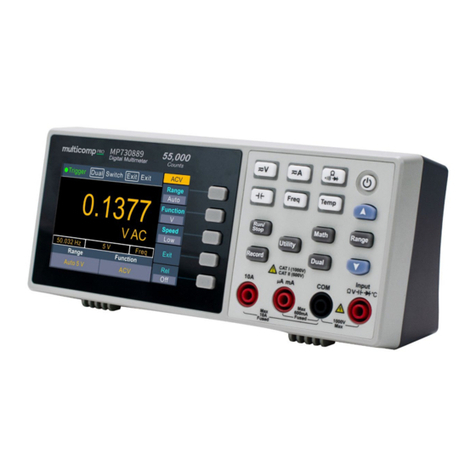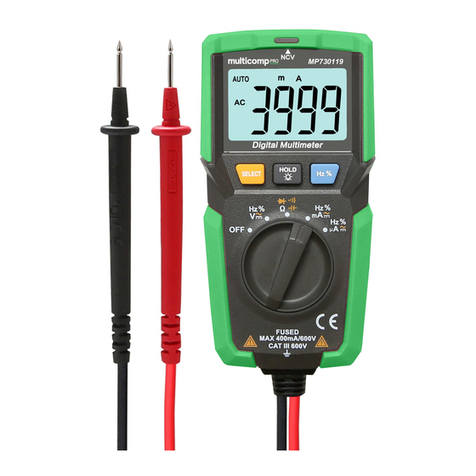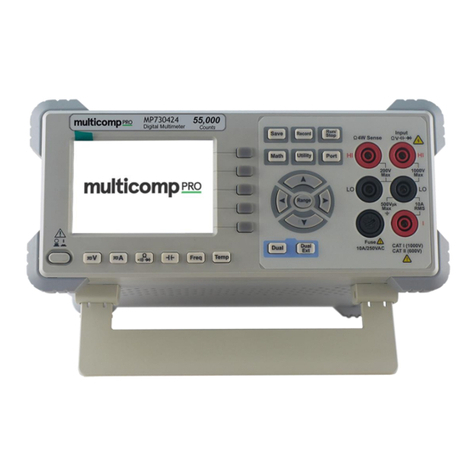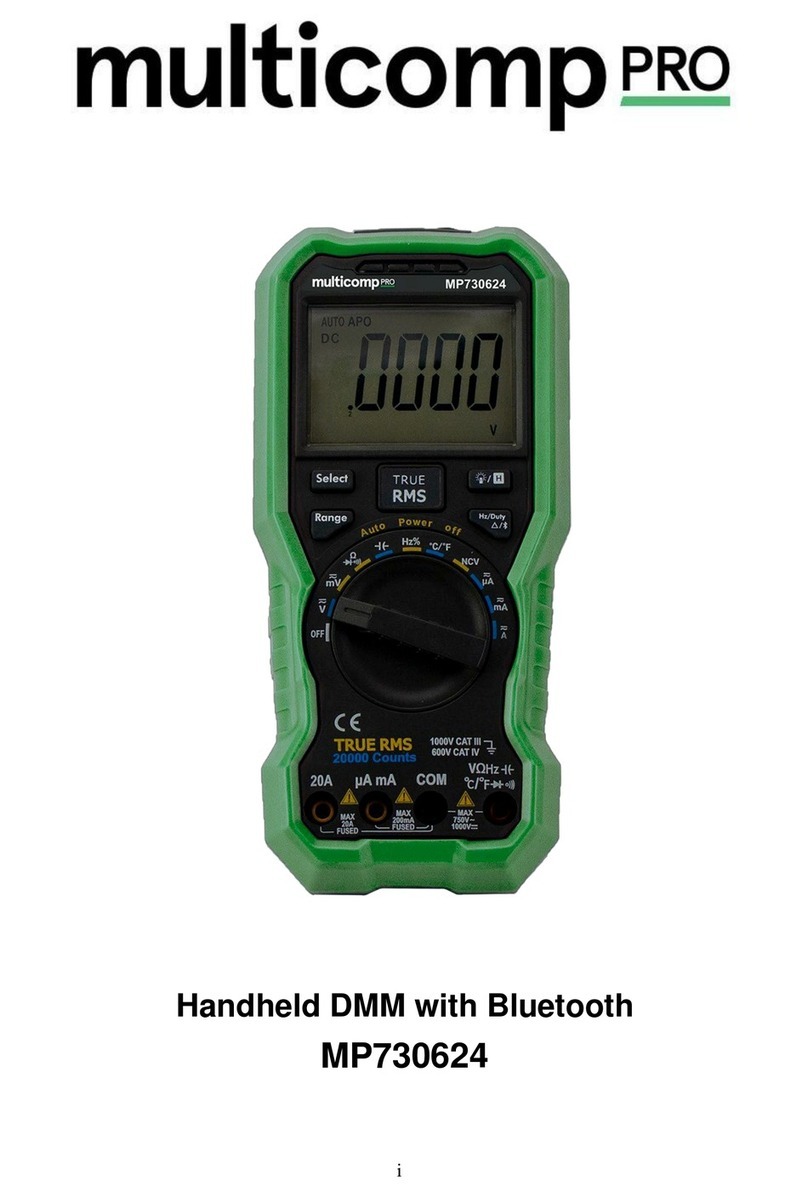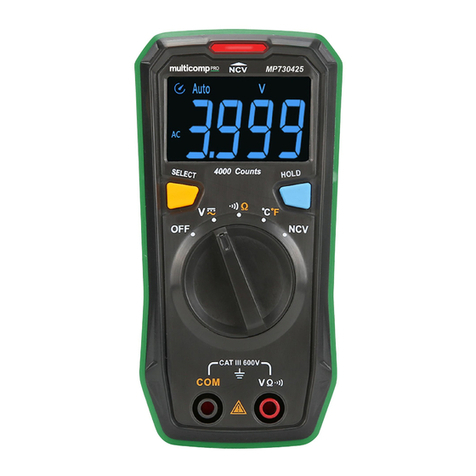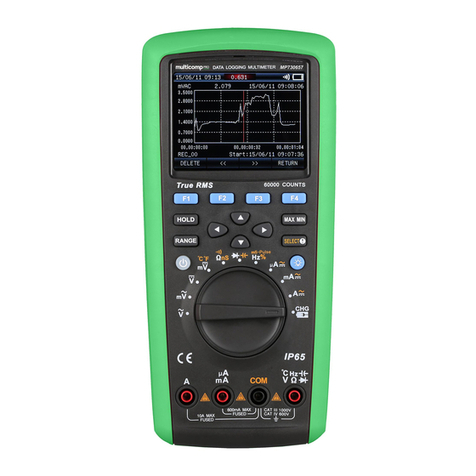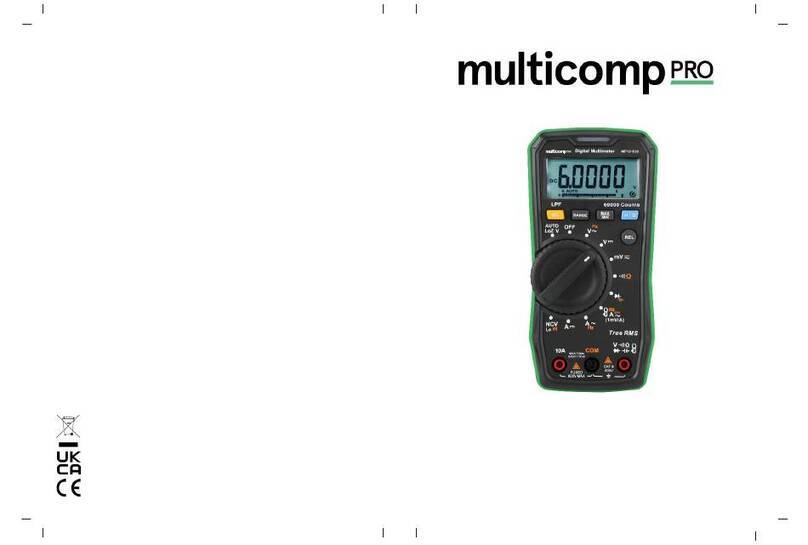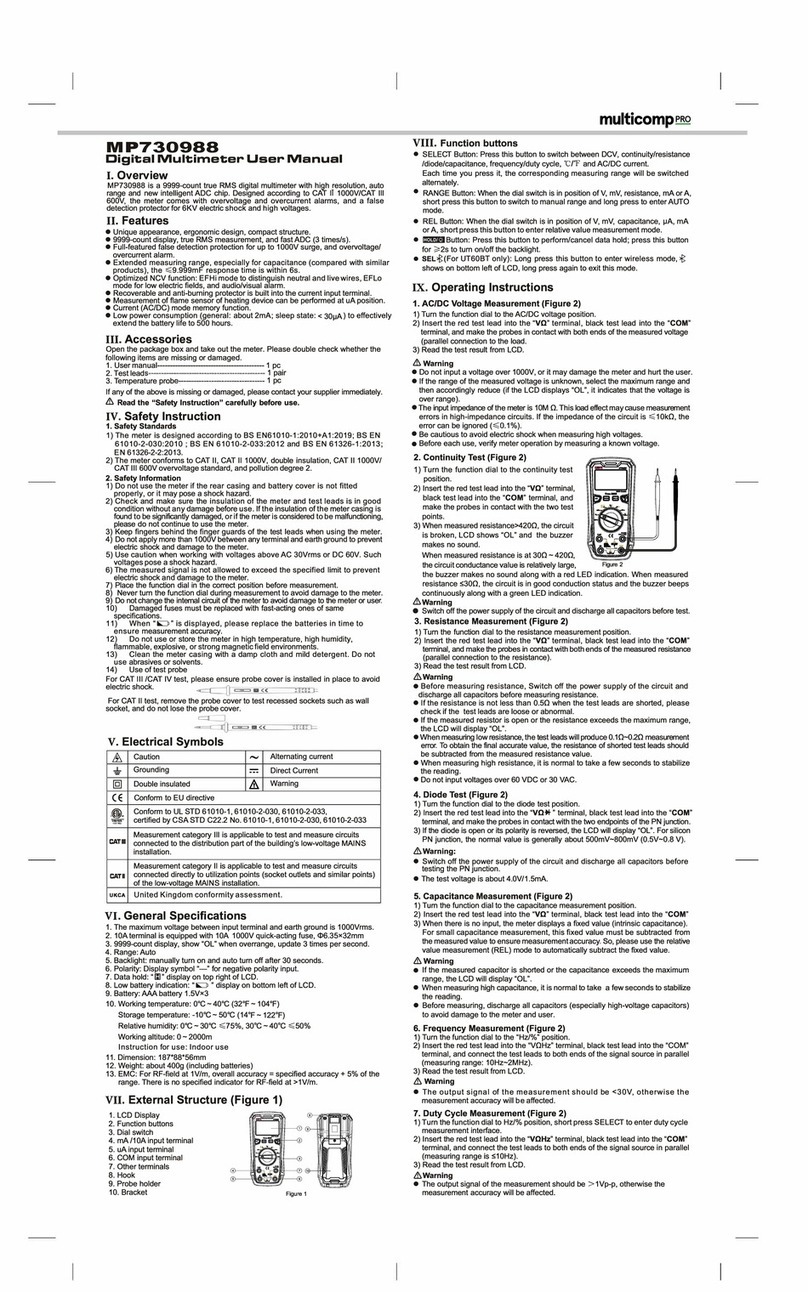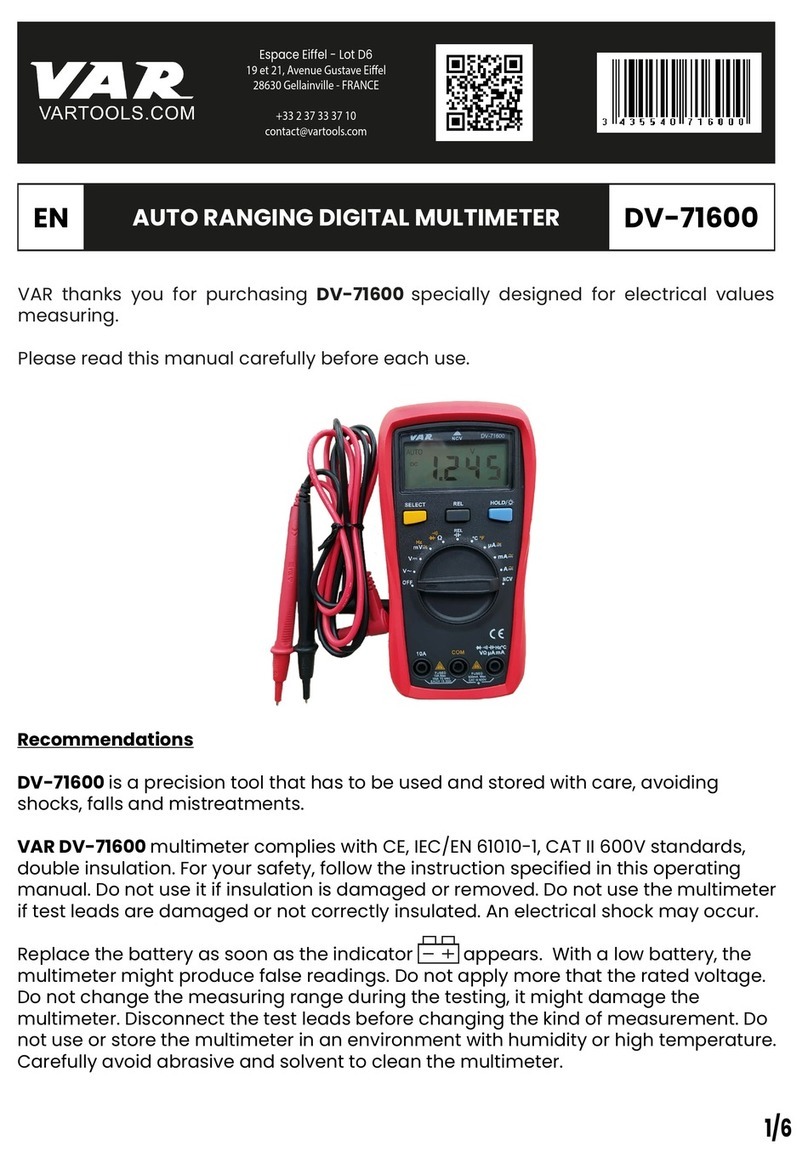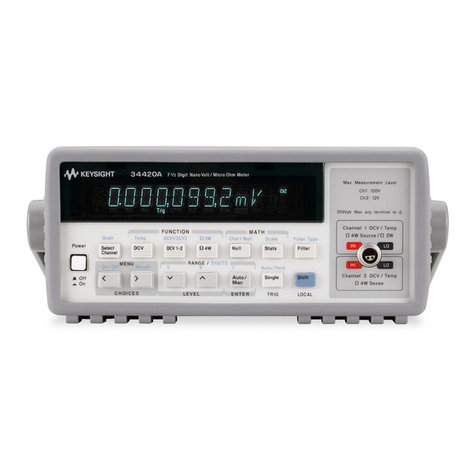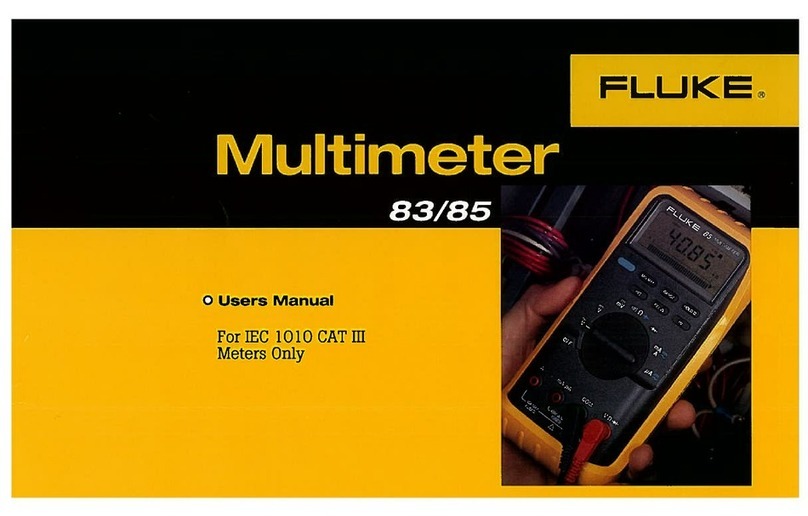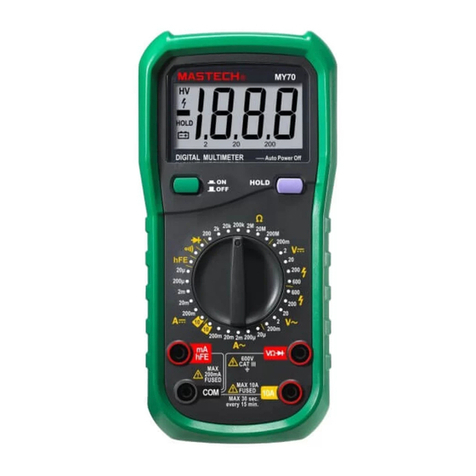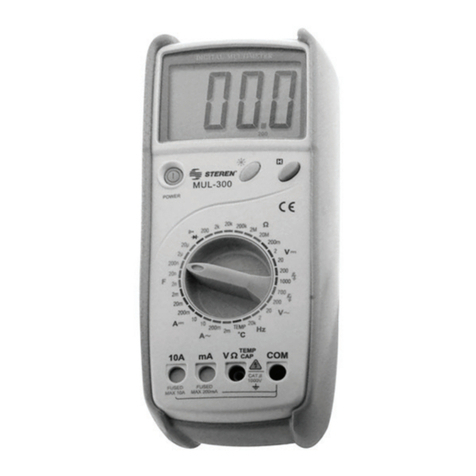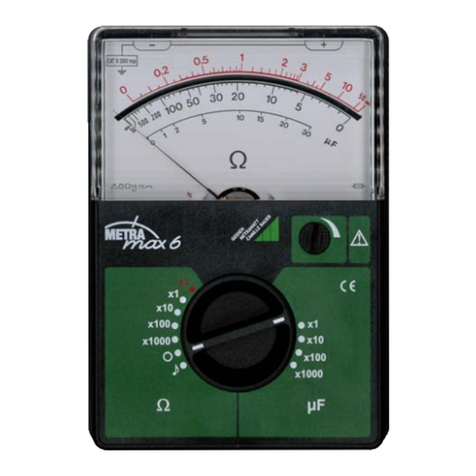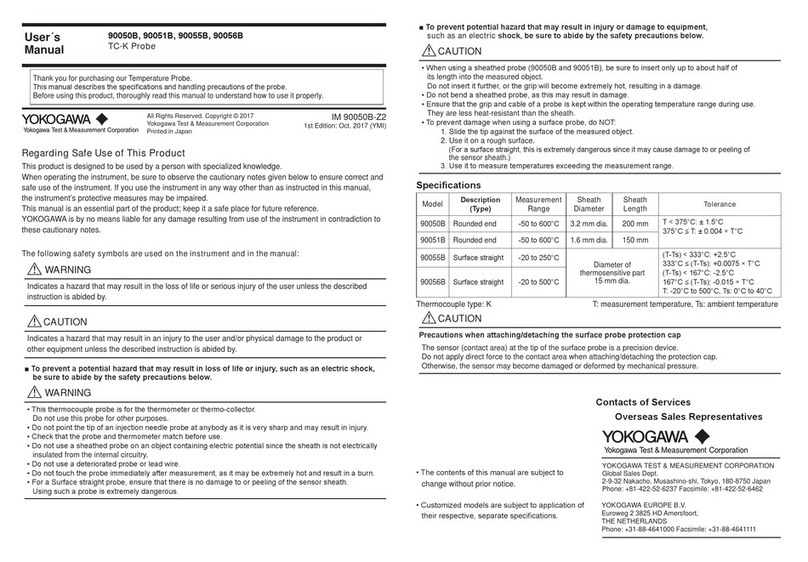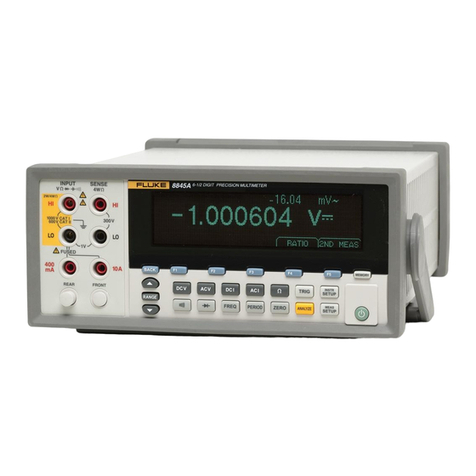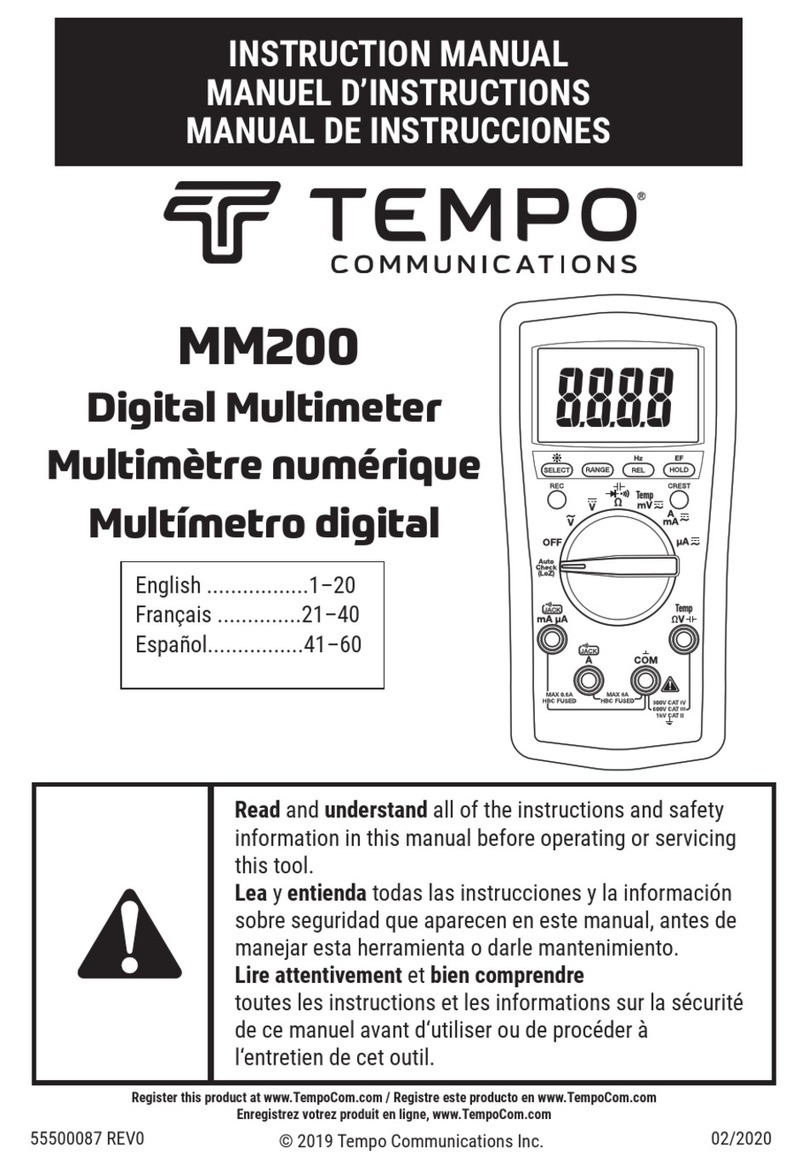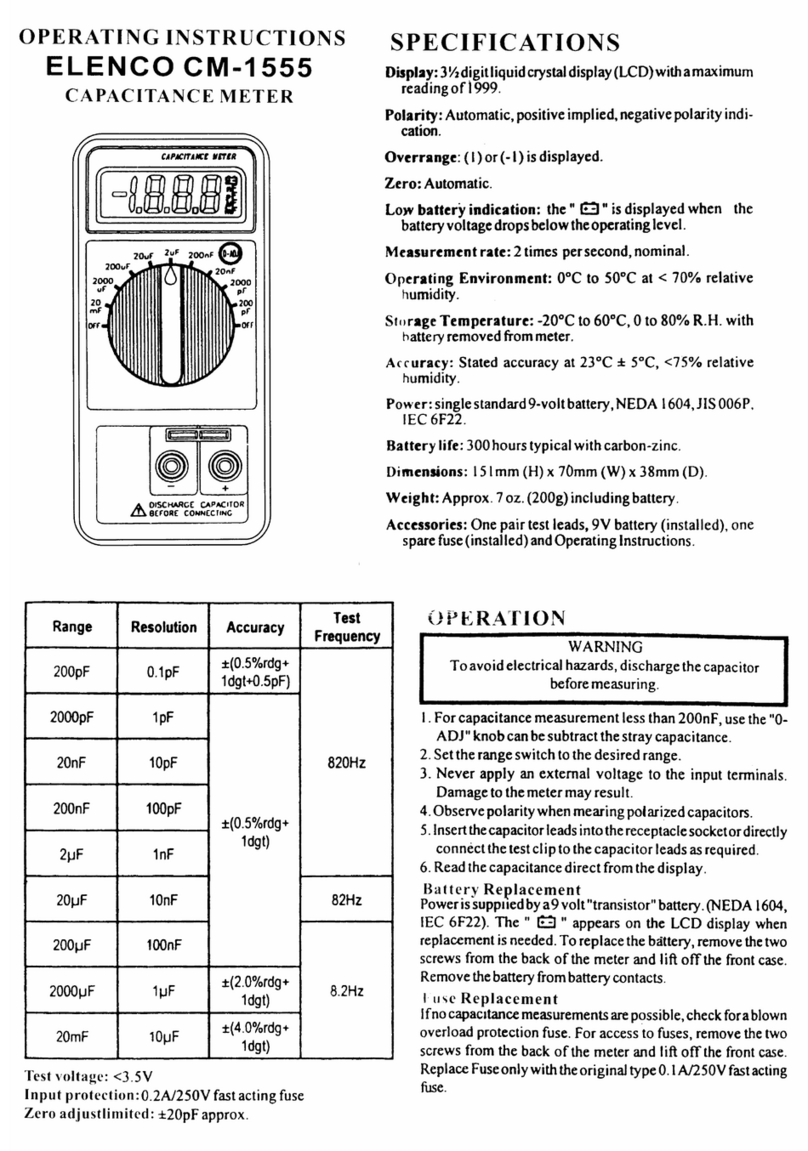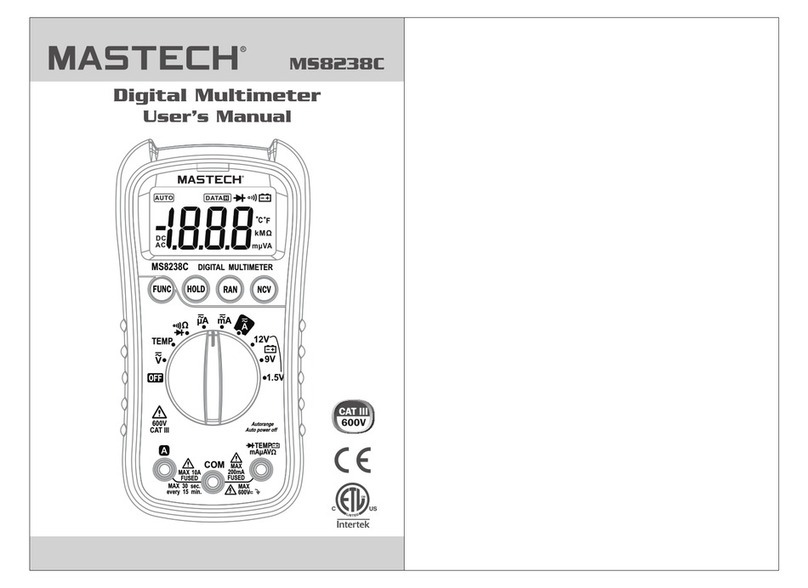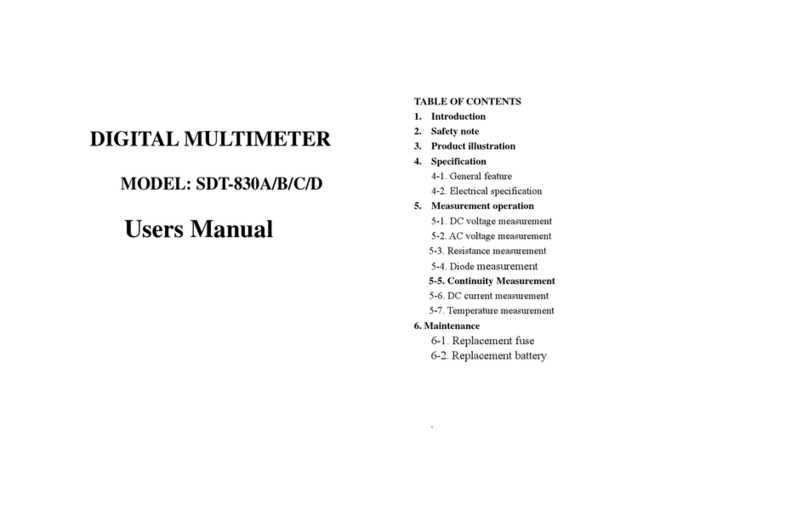
2
OPERATION
AC/DC VOLTAGE MEASUREMENT
DC VOLTAGE MEASUREMENT
AC VOLTAGE MEASUREMENT
EF MEASUREMENT
AUTO FUNCTION MEASUREMENT
• Press SELECT to switch between resistance, AC/DC
voltage, continuity buzzer and diode measurement modes.
Press and hold to exit “sleep” mode.
• Press HOLD to enter and exit hold mode (except under auto
scan mode).
• Press and hold the HOLD button, the meter displays
Hautomatically holds the value currently displayed for
approximately 6 secs. If the Meter enters “sleep” while in
hold mode, the meter will still be in the hold mode when it is
powered back on.
• The MAX/MIN mode stores minimum (MIN) and maximum
(MAX) input values (except under auto scan mode). Manual
ranging is default when you select this function.
• Press MAX/MIN button to switch between MAX, MIN, and
MAX/MIN options.
• If under both HOLD mode and MAX/MIN mode, exit HOLD
mode rst then press and hold MAX/MIN for more than 1
second to exit MAX/MIN mode.
• Press BACKLIGHT to turn the display backlight and test
lead LED on. Press again to turn the display backlight and
test lead light off. It will automatically turn off after 1 minute.
• Auto power off is set to approximately 10 minutes to
preserve battery life if no button is pressed. The meter can
be activated again by pressing any button, following which it
returns to the previously active function.
• Before making any measurement the meter test input
terminal has to be exposed by pressing down and twisting
the red cover counter clockwise.
• Connect the supplied COM test lead to the connector on the
end of the meter.
• When measurement is complete restore the cover by
twisting it clockwise to protect the terminal.
• Set the mode to V~. Auto measurement mode is the default.
• This mode can measure AC voltage and DC voltage.
• Connect the test leads with the object being measured. The
measured value shows on the display.
• When voltage measurement has been completed,
disconnect the connection from the test leads and the circuit
under test, and remove the testing leads from the input
terminal of the meter.
Note: The threshold voltage of AC voltage is around 400mV.
• Set the mode to V~
• Press SELECT to set DC voltage measurement mode.
• Connect the test leads with the object being measured.
• The measured value shows on the display.
• When voltage measurement has been completed,
disconnect the connection between the testing leads and
the circuit under test, and remove the testing leads from the
input terminal of the meter.
Note: Do not input greater than 300V voltage although it is
possible to measure higher voltage, accuracy and safety are
reduced.
• Set the mode to V~
• Press SELECT to set AC voltage measurement mode.
• Connect the test leads with the object being measured.
• The measured value shows on the display.
• When voltage measurement has been completed,
disconnect the connection between the testing leads and
the circuit under test, and remove the testing leads from the
input terminal of the meter.
Note: Do not input greater than 300V voltage to avoid damage
to the meter. The threshold voltage of AC voltage is around
400mV.
• Set the mode to V~EF and remove the test lead from the
input terminal.
• Press SELECT to set EF measurement mode.
• Place the red tip probe toward the object being measured.
• The measured value shows on the display.
• Set the mode to Ω
• Auto measurement mode is the default, in which the meter
can measure Resistance, Diode, Continuity and Capacitance
automatically.
• For best accuracy, remove the component being measured
from the circuit before measurement.
• Connect the test leads with the object being measured.
• The measured value shows on the display.
• When measurement has been completed, disconnect the
connection between the testing leads and the item under
test, and remove the testing leads from the input terminal of
the meter.
Note: To avoid damages to the Meter or to the devices under
test, disconnect circuit power and discharge all the high-voltage
capacitors before measurement.
Note: Under auto measurement mode, when measuring
Resistance of <15Ω or >10MΩ or Capacitance of <400pF or
>1mF the Meter may display an inaccurate value. Use the
dedicated mode to avoid this for these values.


